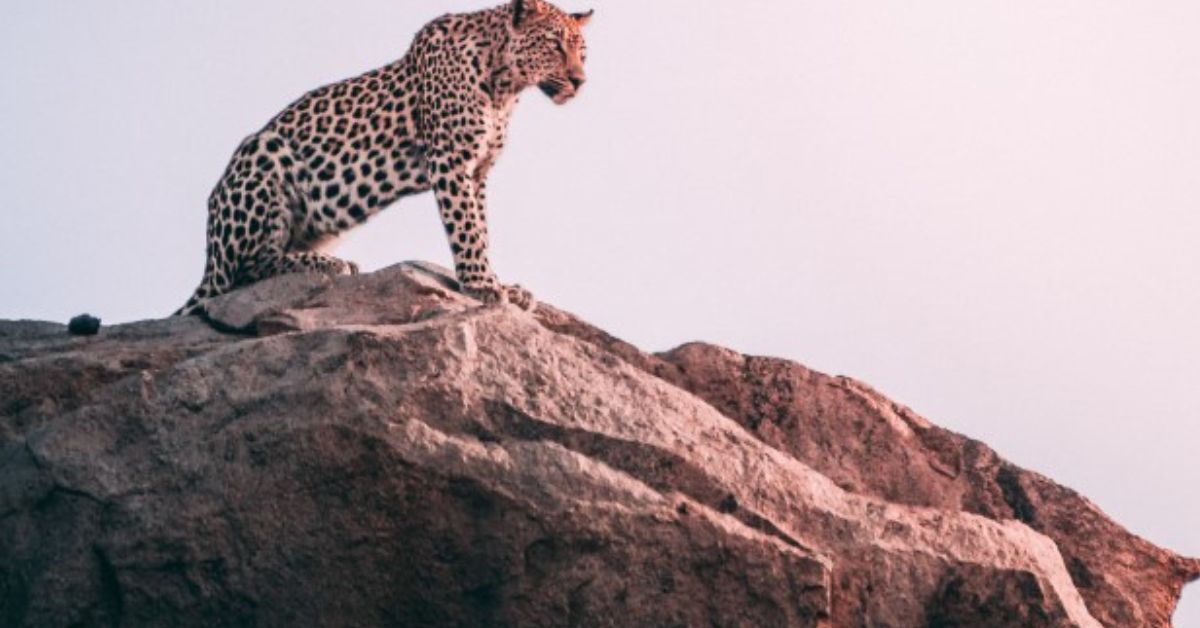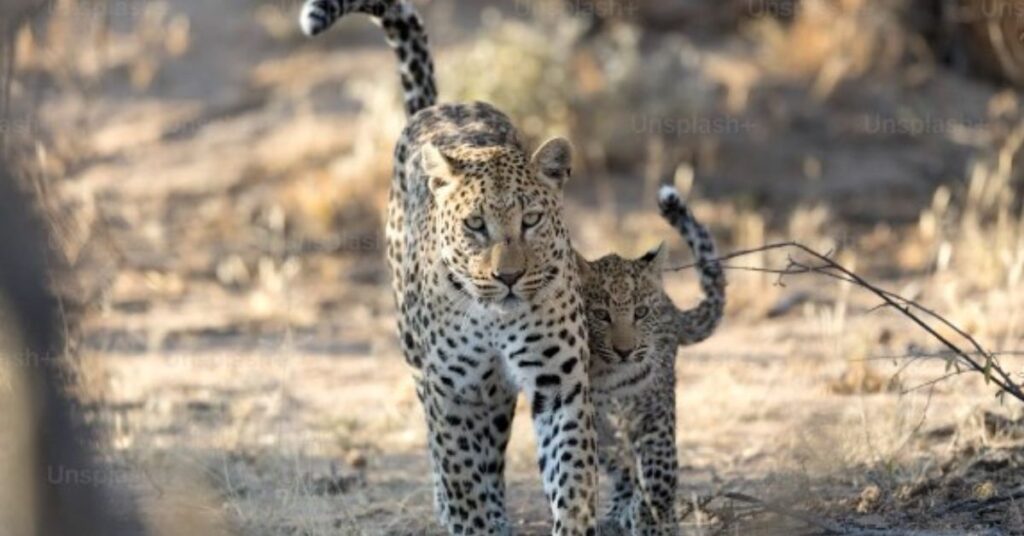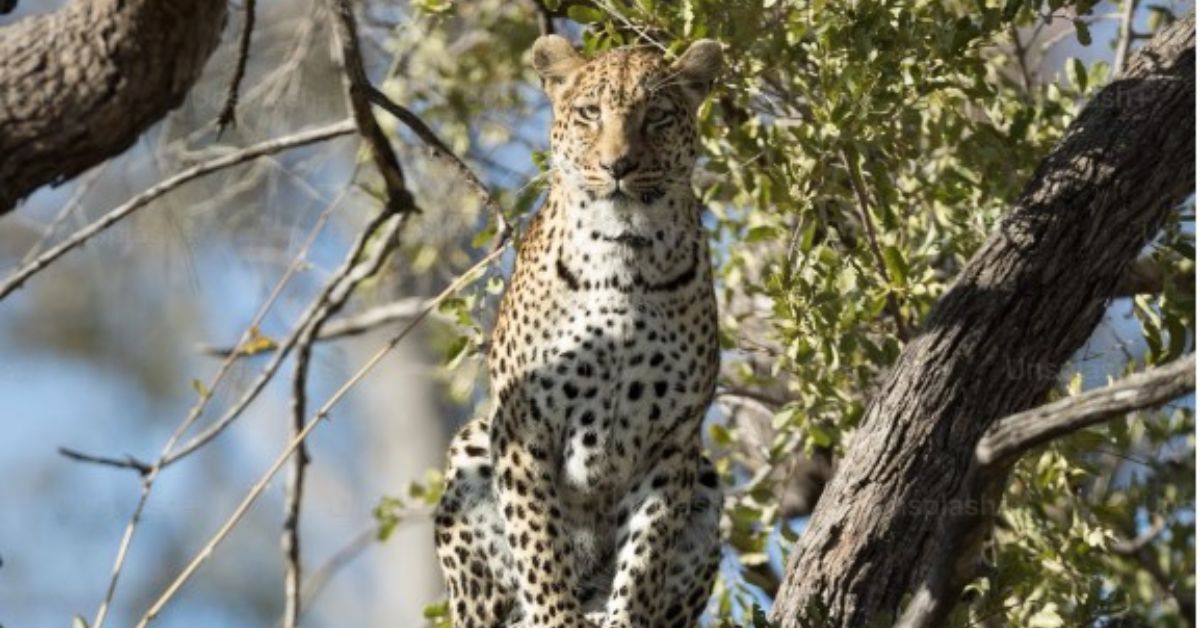
Leopard! It’s a graceful predator, known for its spotted fur.
They’re found in Africa & Asia, known for their camouflage skills. Leopards are part of the Cat family, Felidae.
Scientific Classification of Leopard
Leopards are part of the Cat family, Felidae. In the Big Cat group, they’re the smallest. They’re classified as Panthera pardus, along with other big cats like Lions, Tigers, and Jaguars.
Kingdom – Animalia,
Phylum – Chordata,
Class – Mammalia,
Order – Carnivora,
Family – Felidae,
Genus – Panthera,
Species – P. pardus.
There are nine recognized subspecies of Leopards, distinguished by their physical characteristics and geographic locations. The most common are:
1. African Leopard (Panthera pardus pardus)
2. Amur Leopard (Panthera pardus orientalis) – Critically Endangered
3. Arabian Leopard (Panthera pardus nimr) – Endangered
4. Indian Leopard (Panthera pardus fusca)
5. Indochinese Leopard (Panthera pardus delacouri) – Endangered
6. Javan Leopard (Panthera pardus melas) – Critically Endangered
7. North Chinese Leopard (Panthera pardus japonensis) – Critically Endangered
8. Persian Leopard (Panthera pardus saxicolor) – Endangered
9. South Chinese Leopard (Panthera pardus amoyensis) – Critically Endangered
Size of Leopard
Adult Leopards typically weigh around 60-200 pounds (27-91 kg) and measure 3.5-6.5 feet (1-2 meters) in length, including the tail. In the while, Females are usually smaller than males.
Habits of Leopard
Leopards are adaptable and can live in various habitats, including forests, grasslands, and even rocky areas. They’re solitary animals, but sometimes share territories with other leopards. By virtue, they’re great climbers and use trees for resting, hunting, and safety.

Reproduction of Leopard
Courtships
Leopards have complex courtship rituals, though they’re not as dramatic as some other big cats.
Males and females usually meet during mating season, and the male will perform various displays to impress the female. He’ll roar, growl, and purr, as well as rub his cheeks against trees, rocks, or the ground, spreading his scent. Hence the female identify potential mates and choose the strongest, healthiest individual.
If she’s interested, the female will respond with similar vocalizations and scent marking.
After a brief courtship, the female is ready to mate. She’ll let the male know by approaching him and letting out a series of grunts. They’ll then mate multiple times over a few days, before the female returns to her territory and raises her cubs alone.
Yes, it’s quite common for big cats, including leopards, to mate multiple times during a mating period. Accordingly this increases the likelihood of successful reproduction and ensures genetic diversity within the population. Females are usually receptive to mating for only a few days, so males will try to mate with them as many times as possible within that window.
The female leopard is responsible for raising her cubs alone, providing care and protection until they become independent at around 18-24 months old. Male leopards don’t play a role in raising cubs, but they might protect the territory and help maintain the genetic diversity of the population.
Breeding season
Leopards have a breeding season, which typically occurs during specific times of the year depending on their location and environmental factors.
In general, leopards are polygynous, meaning males mate with multiple females. In the wild, leopard mating seasons can vary from region to region, but it’s often around the wetter months when prey is more abundant and resources are more accessible.

Thus this allows females to have enough energy and nutrients to support pregnancy and lactation. Female leopards typically give birth to 1-4 cubs, which they raise alone in secluded dens or in dense vegetation. The cubs stay with their mother for about 18-24 months, learning essential hunting and survival skills before striking out on their own.
Does the Adult Female Give Birth Every Year?
No, adult female leopards typically don’t give birth every year.
Their reproductive cycle is somewhat sporadic, and they may not breed annually due to various factors like resource availability, competition with other leopards, and environmental conditions.
In the wild, the interval between litters can be anywhere from two to four years, allowing females to recover from the energy-intensive process of raising cubs and ensure their survival. This reproductive strategy helps maintain the health and well-being of both the mother and her offspring.
Obviously leopard breeding strategies are quite intelligent! Their reproductive patterns ensure that females have adequate time and resources to care for their cubs, which increases the likelihood of their survival. This helps maintain a healthy population of leopards and contributes to the overall balance of the ecosystem.
Life Cycle of Leopard
Leopards have a similar life cycle to other big cats. Here’s an overview:
1. Birth: After a gestation period of around 90-100 days, a female Leopard gives birth to 1-4 cubs in a den or hidden location. The cubs are blind and helpless at birth but grow quickly under their mother’s care.
2. Infancy: Cubs stay with their mother for about 1-2 years, learning essential survival skills like hunting and climbing. They also play and bond with each other.
3. Adolescence: At around 18-24 months, cubs start to venture out on their own, though they may stay in their mother’s territory for a while longer. They’re still dependent on her for guidance and support.
4. Adulthood: At around 2-3 years old, Leopards reach sexual maturity and are able to reproduce. Males may establish territories and compete with other males for mates.
5. Old age: As they age, Leopards may become less active and successful hunters, leading to decreased health and increased vulnerability to predators or humans.
Life Span of Leopards
In the wild, Leopards can live up to 12-15 years, but in captivity, they may live longer, up to 20 years or more. Moreover their life span depends on various factors like predator-prey relationships, habitat quality, and human interference.
What’s Unique About Leopards?
Leopards have several unique features that set them apart from other big cats:
1. Spots: Their distinctive coat pattern, with rosette-shaped spots, is unique among big cats and helps them blend into their surroundings for hunting and camouflage.
2. Adaptability: Leopards can adapt to various habitats, making them one of the most widespread big cat species. They’re found in Africa, Asia, and even parts of Europe.
3. Agility: Leopards are exceptionally agile and can climb trees headfirst, even while carrying heavy prey. Their strong claws and flexible bodies make them expert hunters and climbers.
4. Stealth: Leopards are skilled hunters, known for their silent and stealthy approach to prey. They can leap over 20 feet (6 meters) and pounce with incredible force, taking down prey much larger than themselves.
5. Versatile diet: Leopards are opportunistic hunters and can adapt their diet to what’s available in their environment. They prey on various animals, from small rodents to large antelopes.
Hunting Behavior of Leopards
How the leopards hunt?
Leopards are incredibly skilled hunters, known for their stealth and agility. Here’s how they typically hunt:
1. Stalking: Leopards approach their prey slowly and silently, using their camouflage to blend in with their surroundings.
They keep low to the ground and move with caution to avoid detection.
2. Ambush: Once they’re close enough, leopards spring into action, bursting forward and pouncing onto their unsuspecting prey. They use their powerful legs and sharp claws to take down their victims with a single, swift move.
3. Climbing: Leopards are excellent climbers and often hunt from trees, using their height advantage to ambush prey below. They’re known for their ability to climb headfirst, even while carrying heavy prey.

4. Strength: Despite their small size relative to other big cats, leopards are surprisingly strong. They can drag their prey up into trees, where they can feed in safety and avoid competition from other predators.
Overall, leopards are masters of stealth and agility, making them successful hunters in a variety of habitats.
Do They Eat Dead Carcasses?
Leopards are opportunistic hunters and will eat whatever prey they can catch.
While they primarily hunt live prey, they may consume dead carcasses if they come across them.
However, their diet primarily consists of medium-sized mammals, such as rodents, hares, and medium-sized antelopes.
In some areas, they also prey on larger animals like deer and wild boars.
Leopards are skilled climbers and often drag their kills up into trees to protect them from other predators and scavengers.
Are They Man Eater?
Regarding leopards, they’re not considered man-eaters. They typically hunt and feed on medium to large-sized animals like antelopes, deer, and wild pigs.
However, they’re opportunistic predators and might take down humans if they feel threatened or if there’s a lack of other prey options.
Do People Hunt Leopards?
Unfortunately, in some parts of the world, leopards are hunted by humans for their fur, bones, and other body parts, which are used in traditional medicine or as trophies.
However, hunting leopards is illegal in many countries and strictly regulated in others.
In some areas, leopards are also killed as a result of human-wildlife conflict, when they prey on livestock or threaten local communities.
Conservation efforts aim to mitigate these conflicts and promote coexistence between leopards and humans. It’s important to support leopard conservation initiatives and raise awareness about the importance of protecting these magnificent big cats to ensure their long-term survival.
Are Leopards Endangered?
Leopards were once considered endangered due to habitat loss, poaching, and human-wildlife conflict.
However, their conservation status has improved in recent years, and they are now listed as “Near Threatened” by the International Union for Conservation of Nature (IUCN).
While their numbers have stabilized in some areas, leopards still face threats from habitat loss, fragmentation, and human-wildlife conflict.
Conservation efforts, including protection of habitat, anti-poaching measures, and education campaigns, have contributed to their improved status.
It’s important to continue supporting leopard conservation initiatives to ensure their long-term survival and protect these magnificent big cats for future generations.

1 thought on “Leopard! A Graceful Predator”